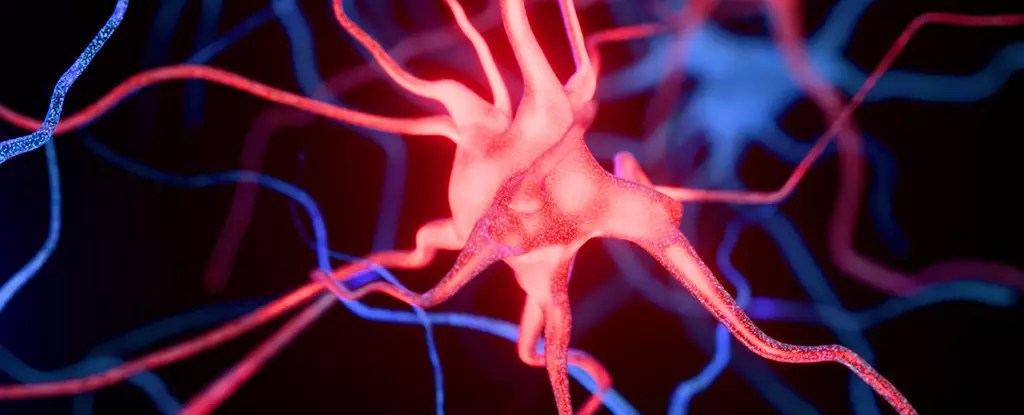In the shadowy confluence of environmental pollution and genetic predisposition lies a danger that many overlook: microplastics. Recent research from the University of Rhode Island underscores a daunting reality—these tiny pollutants, omnipresent in our ecosystems, may significantly amplify the risk of developing neurodegenerative diseases like Alzheimer’s, especially in individuals already genetically vulnerable. While the scientific community often emphasizes lifestyle factors such as diet and exercise, such findings remind us that the environment’s insidious contaminants might be our most formidable foe in safeguarding brain health.
This study, conducted on mice, offers a sobering glimpse into how microplastics could serve as unseen catalysts, interacting with genetic factors to expedite cognitive decline. Particularly alarming is the potential intersection between pollution and known genetic markers—like the APOE4 gene—that predispose individuals to Alzheimer’s. The implications stretch beyond academia; they reveal a societal failure to address pollution’s full spectrum of health consequences. Our reliance on plastics, coupled with insufficient regulation and waste management, inadvertently sets the stage for long-term neurological damage.
The Dangerous Synergy of Genes and Pollutants
The research sets out to explore whether environmental toxins such as microplastics can accelerate or even trigger Alzheimer’s symptoms in genetically predisposed populations. They examined two groups of genetically distinct mice: one carrying the APOE4 gene, the so-called “bad luck” gene associated with Alzheimer’s risk, and another with the comparatively benign APOE3 variant. When these mice consumed microplastics via drinking water, only those with the APOE4 gene exhibited early signs of cognitive decline. The contrast reveals a disturbing synergy: genetics set the stage, but environmental toxins perform the act.
This finding challenges the often-held belief that Alzheimer’s is predominantly a consequence of aging and genetics alone. It suggests that our environment—the air we breathe, the water we drink, the plastics we unwittingly ingest—may be tipping the scales for vulnerable populations. What is particularly compelling is how this disruption manifests differently along sex lines, echoing human clinical observations. Male mice displayed apathetic behavior, and females experienced memory issues, mirroring the gender disparities observed in Alzheimer’s patients.
This sex-dependent variation emphasizes the importance of personalized considerations in disease progression and prevention strategies. It ignites a broader dialogue about environmental equity and how pollution disproportionately impacts certain groups, often the most vulnerable, in our society.
Microplastics: The Invisible Brain Invaders
The concern surrounding microplastics is not just their ubiquitous presence but their elusive ability to infiltrate the brain. The research indicates that microplastics, when ingested or inhaled, could breach the blood-brain barrier, leading to pathological changes reminiscent of early Alzheimer’s pathology. Though mice did not develop full-blown Alzheimer’s, their behavioral changes and markers of inflammation suggest that these pollutants could accelerate underlying processes contributing to the disease.
One of the most striking aspects of this research is the speed at which these changes occurred—in a matter of weeks—highlighting the potent threat microplastics pose. Unlike genetic predisposition, which remains static, environmental exposure is modifiable; yet, society seems largely passive in countering this threat. Our overdependence on plastics and the inadequate regulation of microplastic pollution are systemic failures that may cost future generations their cognitive health.
The link between microplastics and neurodegeneration compels us to reconsider our environmental policies and personal habits. Are we, unwittingly, contaminating our brains? The potential for microplastics to mimic or trigger early signs of Alzheimer’s invites urgent calls for stricter regulations, innovative waste reduction strategies, and public awareness campaigns. This is no longer a question of environmental aesthetics but one of public health on a profound scale.
Why We Cannot Ignore the Intersection of Environment and Genetics
The broader societal implications of this study point to a truth that many prefer to ignore: health is fundamentally intertwined with our environment. While genetic factors like APOE4 are beyond our immediate control, environmental exposures are modifiable. The dangerous reality is that microplastics could be a ticking time bomb for at-risk populations—those who, due to their genetics, are already walking a fine line toward neurodegeneration.
This calls for a paradigm shift in how we approach preventative health. Environmental stewardship is not an abstract ideal but a concrete necessity if we aim to reduce the burden of diseases like Alzheimer’s. We must hold corporations, policymakers, and individuals accountable for reducing plastic waste and minimizing exposure to these microscopic invaders.
The conversation must extend beyond mere awareness toward actionable change. It’s imperative that we recognize the environment not just as a backdrop for human activity, but as an active participant in our health outcomes. In the battleground for brains, environmental toxins might be the silent enemies we have underestimated for too long. The fight against neurodegenerative diseases, therefore, must include a defense against the pervasive proliferation of microplastics, which now threaten to undermine decades of progress in understanding and potentially preventing Alzheimer’s.
In confronting this challenge, society must grapple with the uncomfortable truth: the degradation of our environment is, in many ways, the degradation of our collective future. It’s time to elevate the urgency of addressing microplastic pollution—not just to preserve ecosystems, but to protect the very foundations of our mental well-being.

